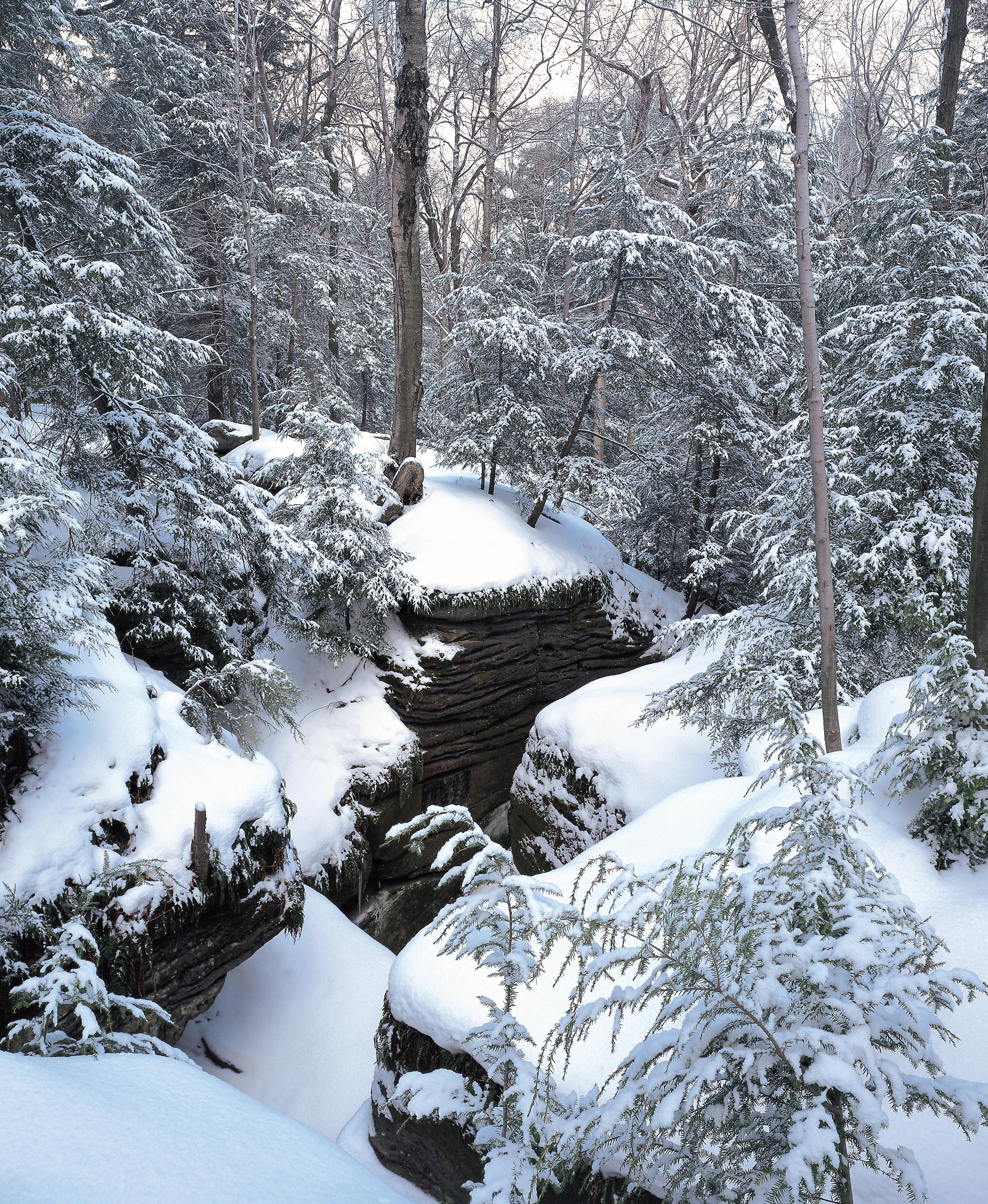
4 minute read
The forests and gardens transition into a pristine, white canvas in winter — an ideal backdrop for spotting many types of birds
Feathered Friends in Winter
The forests and gardens transition into a pristine, white canvas in winter — an ideal backdrop for spotting many types of birds that spend the cold season on property.
By Kristen Hampshire
Red-bellied Woodpecker, Melanerpes carolinus Birds in winter are active all day as opposed to hot seasons when birders must rise and shine early.
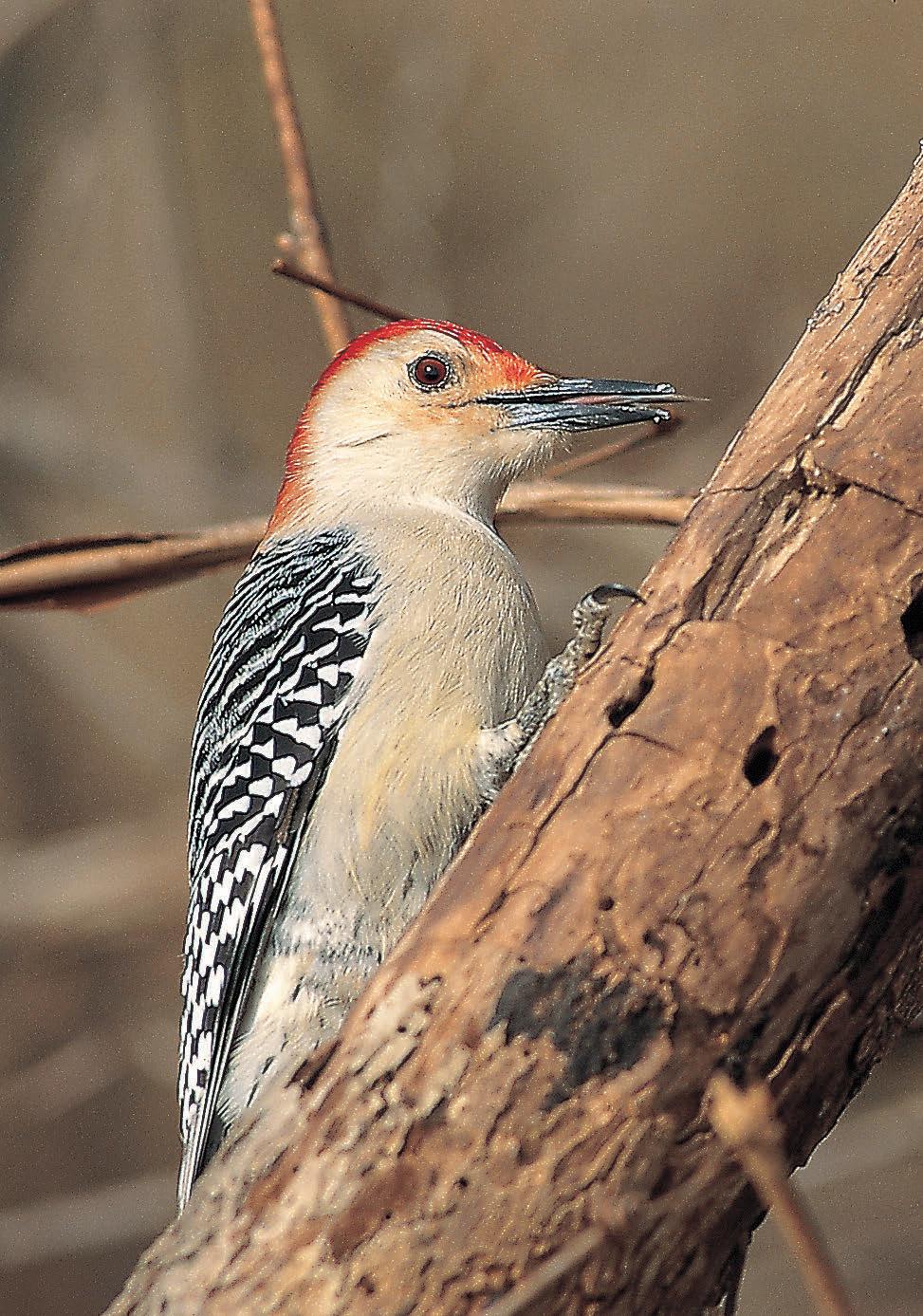
After the leaves drop and temperatures chill, the forest canopy and gardens reveal a special show of birds that stay through the winter. You can see them feed, interact as they mouth berries in pecking order and flit among the branches.
“The birds that do not migrate are easier to view and experience in winter than in other seasons,” says Rebecca Thompson, manager of academic programs, Holden Forests & Gardens. “You can watch their behaviors because they are more likely not moving as fast and doing as much activity during the winter as they are during their breeding season in spring and summer. So it’s a lot more casual — and it’s a good time to start birdwatching, too.”
While many birds migrate in fall to warmer climates, there are a number of varieties you can see in the Holden Arboretum’s forest, managed gardens and fields, and at the Botanical Garden. Plus, birds in winter are active all day as opposed to hot seasons when birders must rise and shine early to watch since their activity is centered during the coolest times of day. “So, if you’re not a morning person, it’s perfect!” Thompson quips.
As for the types of birds you’ll see during the months when snow falls, you can expect Cedar Waxwing to fly in flocks as they seek out plants with berries for feeding. It is known for its vibrant red wax droplets on the wing features and you’ll hear its high whistle.
Eastern bluebirds group in the provided homes throughout the property and exit to seek out fruit. “A lot of our winter birds that stick around change their diets from insects to fruits and nuts that they can readily find,” Thompson relates.
And some birds like the American Goldfinch change color. “A lot of people think they migrate, but they do not,” Thompson says. “They change from a bright yellow to a dull, green-yellow — they’re here, they’re just not so flashy.”
When the ponds are not frozen, you might spot Waterfowl. Chickadees, Blue Jays and White-breasted Nuthatch love the trees on the property’s gardens and forests. In open-field areas, you’ll find Crows and Song Sparrows.
“Sometimes, when seed availability is low in Canada, we get some migrants that can include Redpoll, Red Crossbill and Pine Siskin. “Some years, we have massive amounts of these unique species but they are regular in terms of their visitation,” Thompson says. “If you are an avid bird watcher, those are a highlight.”
Woodpeckers are abundant during the cold season — including the Hairy Woodpecker that hitches up tree trunks and main braches, sometimes feeding at tree bases, along fallen logs or on the ground. They are slower flyers than other woodpeckers, like the Downy and Red-bellied.
Downy Woodpecker, Picoides pubescens
As you explore this winter’s bird showing, here are some ways to experience them in their natural world on site.
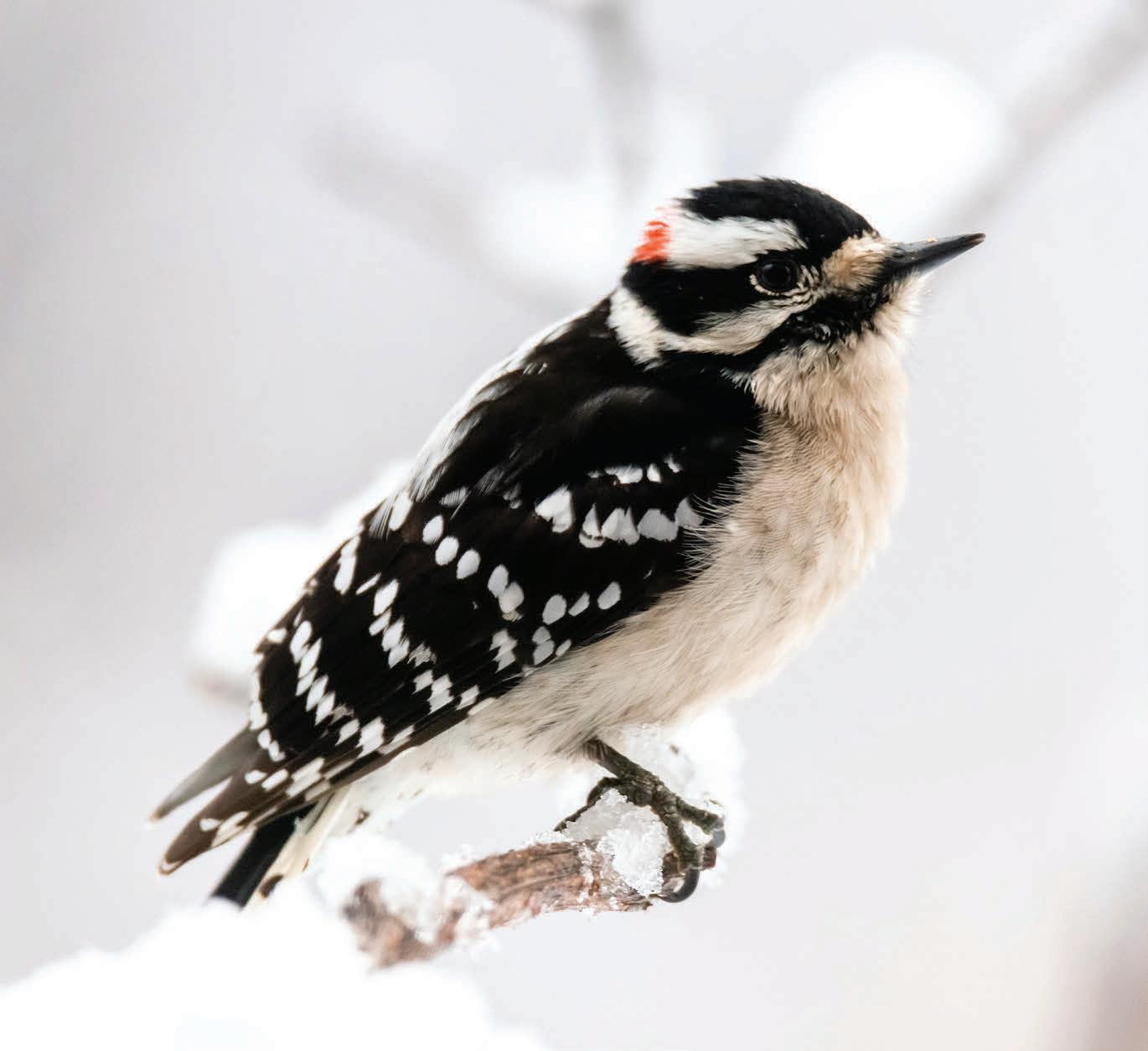
Vary the Environment. Thompson suggests visiting different areas of the arboretum to see different types of birds. “Try to get to the natural areas because it will maximize the number of species you see,” she says. “Birds like to have different habitats — so don’t spend the whole time in the forest. Go into the gardens and fields, too, and at the arboretum, it’s so easy to get to those locations because they are not far away from the main visitor center.”
Go Cross Country. A network of established trails along the property are open for cross-country skiers. You’ll pass by the conifer collection, the holly collection and sugar maple area, where you can spot all kinds of winter birds nesting and feeding. Trails are open December through February as the snow base allows.

Blaze a Trail. Rent snowshoes at Holden Arboretum and hike the trails. The frozen landscape is a pristine backdrop where you’ll easily spot birds that can be difficult to view otherwise. Take a learn-tosnowshoe class to brush up on some basics before you blaze a trail through the powder. For winter birders, snowshoes make traversing covered areas much easier, Thompson says. “Especially when we have deep snow, it’s helpful to have snowshoes on if you are breaking the ground of the trail,” she says. Rent snowshoes for two-hour periods for $5 for adults and $2 for children ages four to 11.
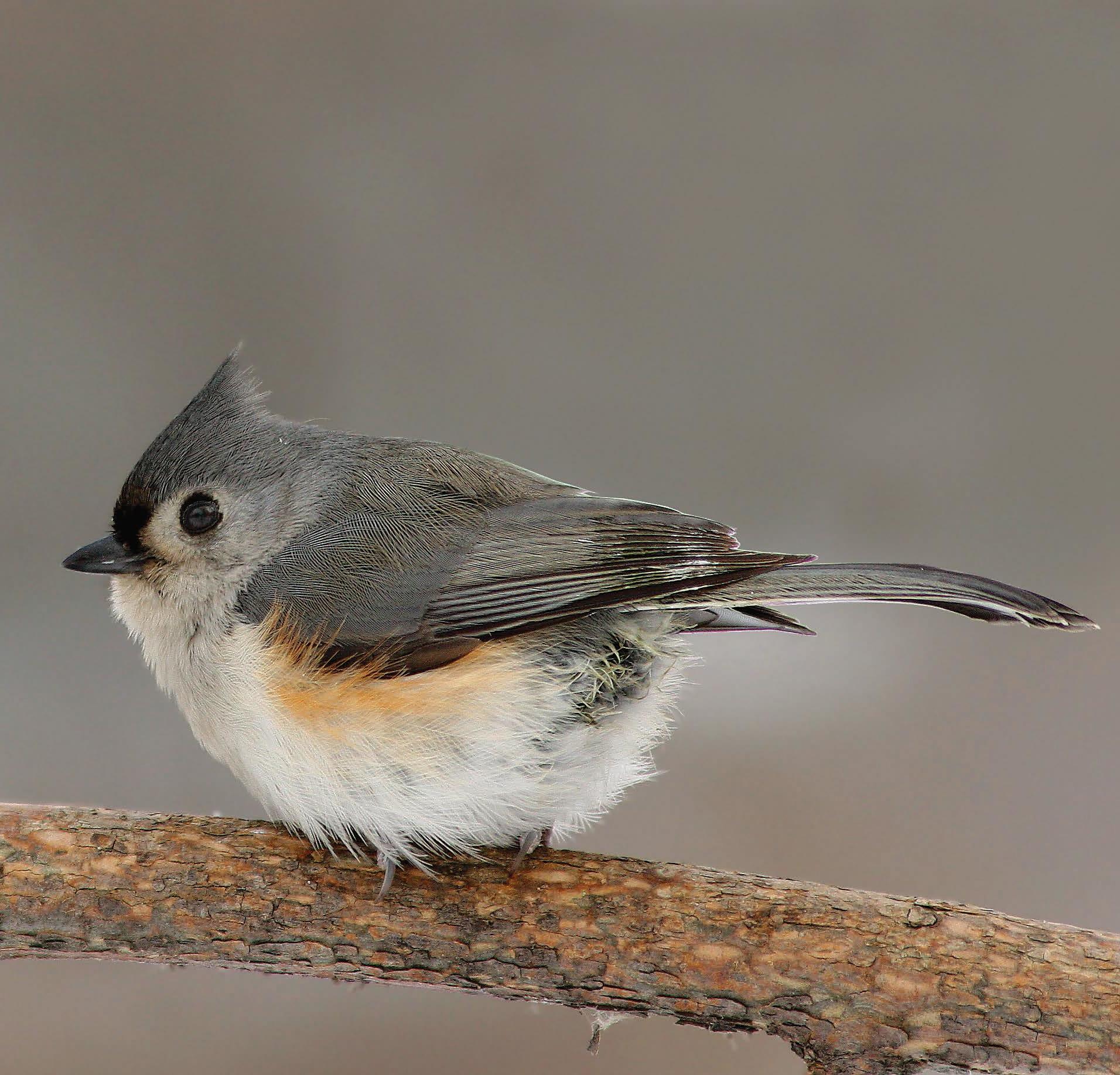
Tufted Titmouse, Baeolophus bicolor Blue Jay, Cyanocitta cristata
For the nature lover on your list, find unique gifts at the Garden and Treehouse stores.
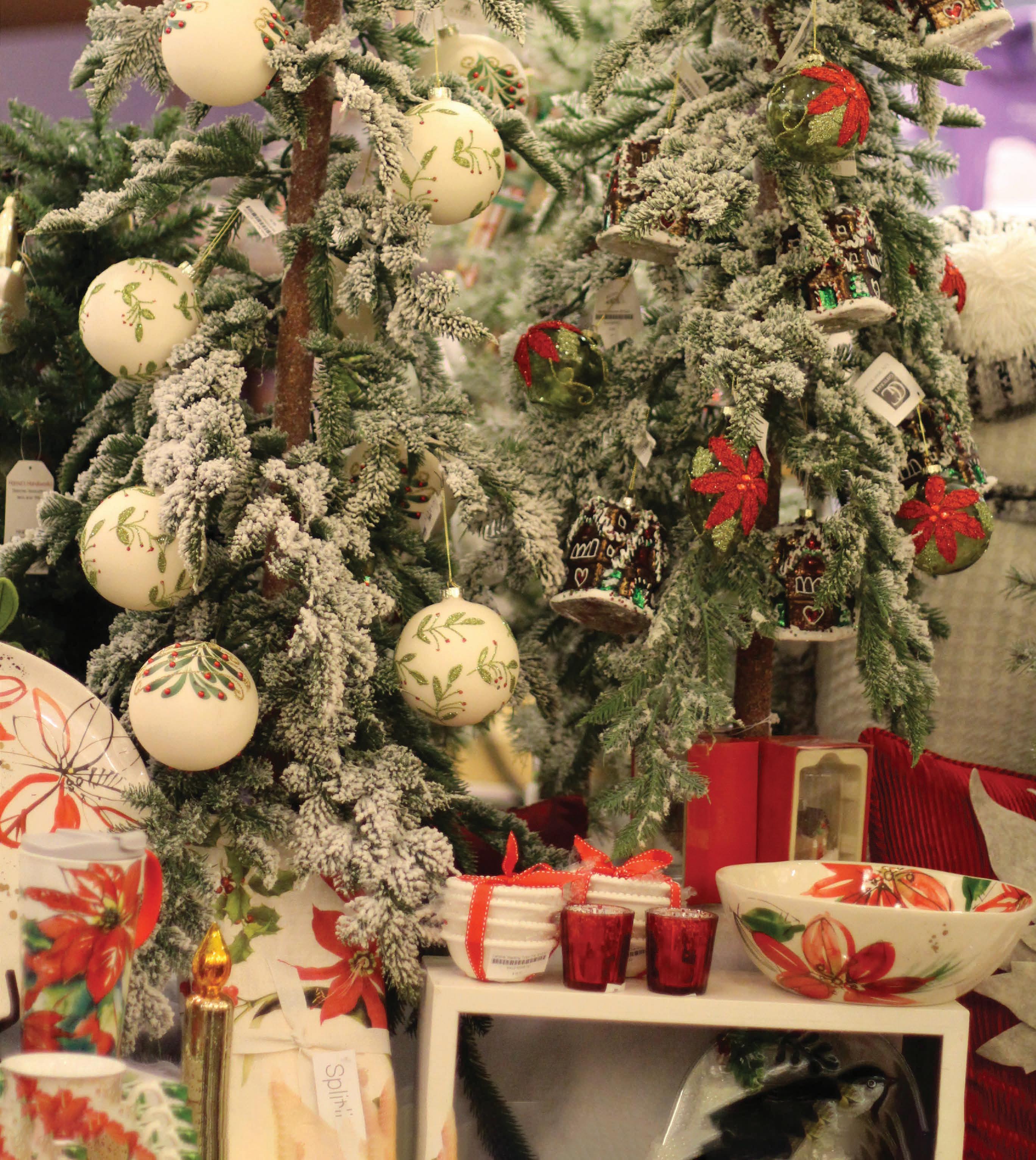
Garden Store Hours:
Sunday: 1 – 5pm Monday: Closed Tuesday – Friday: 11am – 5pm Saturday: 11am – 9pm Treehouse Store Hours:










